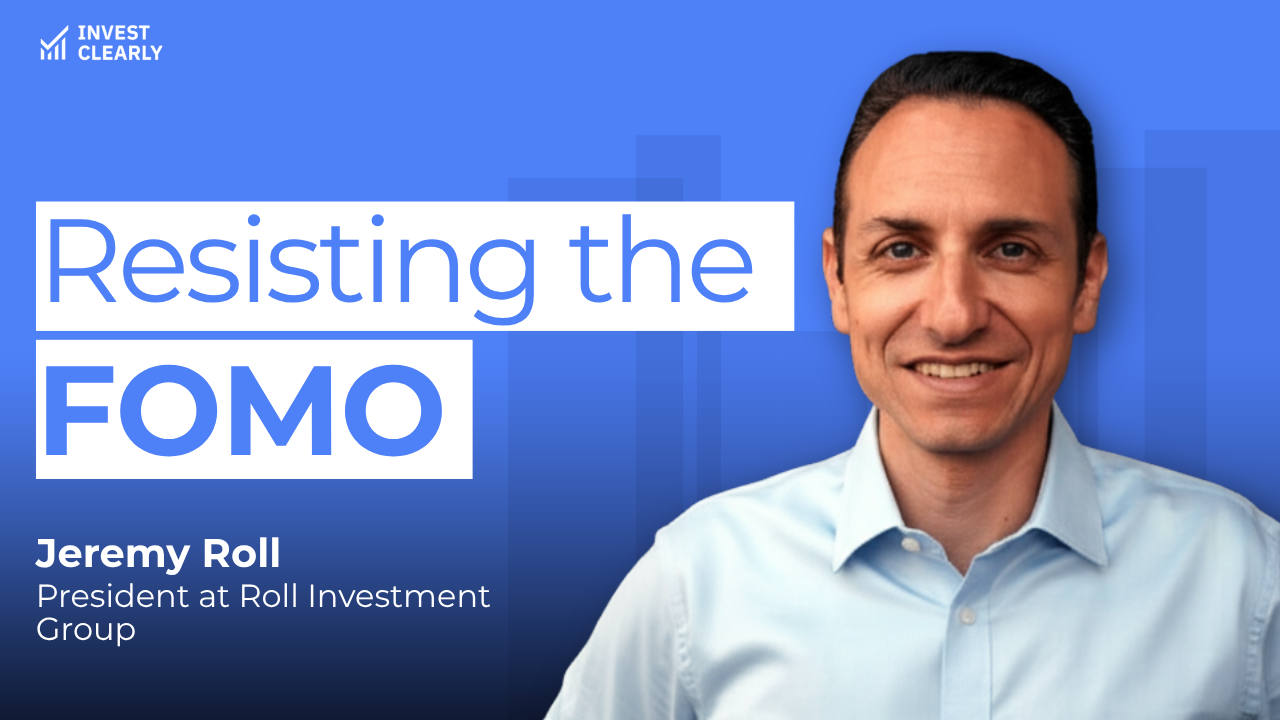
From 200+ Deals to Sitting on the Sidelines with Jeremy Roll
Never miss an Invest Clearly Insights article
Subscribe to our newsletter today
In this conversation, Pat Zingarella and Jeremy Roll discuss the current state of real estate investing, focusing on market trends, investment strategies, and the importance of macroeconomic factors. Jeremy shares his cautious approach to investing, emphasizing the need for discipline and the challenges posed by negative leverage.
They explore alternative investments, the role of AI in due diligence, and the importance of evaluating sponsors carefully. The discussion highlights the need for investors to pay attention to market cycles and to be aware of the risks associated with chasing yield in uncertain times.
From 200+ Deals to Sitting on the Sidelines with Jeremy Roll
[00:00:00] If there's one thing I would beg and plead people to do, it's pay attention to the macro. 90% plus of every single deal that I got was multifamily floating rate bridge loan. Those blew up. Everybody was going to get burned, and that's kind of what's happened. The GPs were ganging up on me and making fun of me, and the audience was laughing at me [00:00:17] for saying that you have to be cautious. I get very concerned about this because I feel like people are trying to chase yield, pivot, and chase yield. Why did my cashflow stop? Why am I getting a capital call? Why is this getting foreclosed, which was not in any of the business plans that they read? I am practically fully on the sidelines.
[00:00:33] Pat: Investors and operators, welcome back to the podcast. In this episode, we sit down with Jeremy Roll, a full-time LP since 2007 with over two decades of experience in the alternative investment space. Jeremy shares why he's currently on the sidelines, how he thinks about negative leverage and end-of-cycle dynamics, and what would need to change for him to start investing again. [00:00:50] We talk about sponsor conservatism, yield chasing, and why he believes discipline and patience are critical during uncertain market cycles. Let's get into it.
[00:01:19] Pat: All right. Perfect. Jeremy, thank you very much for joining me. I didn't bring this up off camera, but before we get started, I just wanted to share sort of how our relationship got started. I don't know if you remember this, but right when we launched, you had reached out to me on LinkedIn, asked for a demo of the site, and provided me with some feedback. [00:01:35] But the coolest part of that, and as it impacts this podcast, is when we got on the phone, you asked me about doing the podcast circuit. And at the time I told you, "Look, I'm honestly a little nervous about doing that because I'm not doing this because I'm an expert syndicator, and I'm afraid if I start getting peppered with questions about waterfalls and distributions and NOI and IRR, I'm not going to be the best person to answer it." [00:01:55] And you gave me a quick but fair challenge. You said to me, "It would be very disappointing if no one learned about this because you were insecure about going on podcasts." It was something like that. And I was like, "Whoa. All right." Because of that, I went on the podcast and the growth of our user base wouldn't be what it is today if I didn't do that. [00:02:17] So I just want to say thank you before we get started.
[00:02:19] Jeremy: Oh, absolutely. Yeah. And I hope I didn't word it too badly. I don't normally—I'm not, I try not to be harsh normally, but I just love what you're doing. I think that you're trying to help everybody, and so to me, of course, you want as many people to hear about it because you want to be able to help them. [00:02:33] So—
[00:02:34] Pat: Yeah, for sure. It wasn't harsh at all. It was like, "It would be really disappointing if no one learned about this." I was like, "All right, I have to go now." But awesome. But Jeremy, thank you again for joining us. Before we really jump into it, can you give us like a 30-second intro on your background, what you're doing today, and then we can get going?
[00:02:50] Jeremy: Absolutely. Yeah. So my name's Jeremy Roll. I am located in Newport Beach, California. I have been investing in the alternative space in mostly real estate syndications, but also non-real estate and other business type opportunities, and a little bit of startups as well since 2002. So it's been 23 years. [00:03:08] The cashflow got me out of the corporate world back in 2007, so I've been doing this full-time for about 18 years. It's a really interesting space, a lot of challenges the past few years. I just love what you're trying to do in terms of helping people and especially what Invest Clearly is trying to really accomplish. I hope this podcast is helpful for as many people as possible.
[00:03:29] Pat: Yeah. Thank you. Awesome. So you are by definition a professional LP. Is that what you consider yourself? You do this full-time.
[00:03:36] Jeremy: Yeah.
[00:03:37] Pat: Okay, awesome. And so you see more deal flow, you look at more sponsors, you've probably had more experience than the majority of people listening to this show. What are you seeing in terms of trends maybe in deals from [00:03:50] three to five years ago to today? Are they getting better? Is there more of them? Is there less of them? What are you seeing?
[00:03:56] Jeremy: Yeah, boy, there's been a big change. Without trying to give you too long of an answer, what was going on, let's say in 2020 to 2022, which is roughly three to five years ago, was a lot of money printing, a lot of capital chasing deals, a lot of what I would call end-of-cycle, very high pricing, and a lot of financial engineering by sponsors to back into, let's say, 15% plus IRR targets [00:04:24] to attract investors. In order to do so, there was a lot of financial engineering in the capital stack. And what I mean by that is there were a lot of deals—almost all the deals had a preferred return layer because they had to make sure they could raise enough money. Most of the deals, especially in apartments, were floating rate bridge loan deals. [00:04:39] That was not by mistake. That was because in order for them to get back into the correct yields that investors were trying to find and that would interest them, they had no choice but to do that because they were paying so much for the asset. And then when we had interest rates start to go up back in March of 2022 [00:04:57] from the Fed, that changed everything. And that basically does what it typically does to real estate, which is interest rates go up, and that really puts a brake on pricing. It puts a brake on investors questioning where the market's going to go. So deal flow has slowed probably, if I had to guess, [00:05:15] 75 to 90%, probably more like 80 to 90%. It's been a tremendous change. Investors have had a lot of challenges if they went into those floating rate bridge loan deals. So I would say the biggest change, honestly, because, you know, end-of-cycle, you're going to get a reduction in deal flow and that's normal. What happened this cycle, which I kept saying for a while, and it really bothers me, is that [00:05:30] back in 2020 to 2022, as an LP, 90% plus of every single deal that I got in across all asset classes in real estate was multifamily floating rate bridge loan. So if you were going to invest in anything, you almost had to invest in that if you were hell-bent on investing. [00:05:51] I didn't invest in any of those. But if you wanted to invest in anything, you almost had no choice. And that created such a concentration risk for investors, meaning that if those blew up, everybody was going to get burned. And that's kind of what's happened on the LP side. So now what we're seeing is a big exit of LPs, or at least a lot of LPs, certainly at the very least, questioning, "Why aren't those deals performing to projections? [00:06:15] Why did my cashflow stop? Why am I getting a capital call? Why is this getting foreclosed?" Which was not in any of the business plans that they read. So it's been—there's just a huge—it's almost like going from one end of the spectrum to the other in the past three to five years. Sorry for the long answer.
[00:06:30] Pat: No, I 100% agree. And that's the narrative we're hearing as well. You hear a lot of these people who talk about dry powder being on the sidelines, but there's not a lot of narrative around people that are being pulled out of this market based on what just happened, unfortunately. So when you think about [00:06:43] all of that floating rate debt, the deal flow being down 80 to 90%, maybe you holding off on making allocations, then what does your strategy look like now based on all of those things?
[00:06:56] Jeremy: Yeah, you know, I'm very much on the sidelines. If I can give you the past five years: 2020 to 2022, I was very cautious. 2023, I was extremely cautious. 2024 and 2025, I am practically fully on the sidelines. So unless there's some really unique—you know, Layla on the podcast with you called it a Unicorn—unless there's some really unique, odd situation, [00:07:21] I am on the sidelines. And for me, there are two reasons. One is I want to see if we're going to have what I call an end-of-cycle reset, which would potentially be started by a recession. But the other is negative leverage, which we've had for years now. And to me, that's like if you ask me my one guiding light as to how do you know when to jump back in, [00:07:39] it's positive leverage. We continue to have negative leverage in a lot of deals that I see. The few that I see with positive leverage, there's some other additional layer of risk. It could be a tertiary market, it could be a very old asset. It could be a very high-risk deal, like in terms of highly value-add, which I don't personally look at. [00:07:58] I look at more stabilized cashflowing deals. So I'm very, very much on the sidelines. And one more data point, because I really follow macroeconomics closely, which is: we had an inverted yield curve. The yield curve uninverted back, I believe, in October of 2024. You would almost always have a recession within one year after that, and very commonly within six months after that. We're now at that six-to-nine-month timeframe as we're recording this. [00:08:21] And so if you look at probabilities based on history, we have a high probability of recession coming up by the end of the year. I'm not saying it's going to happen for sure, but I have to work off probabilities to try to protect myself, especially in illiquid investments like this. So that's why I'm very much on the sideline, just waiting to see what happens.
[00:08:36] Pat: Yeah. That's so interesting. So this is more of a question for me and maybe the audience, but you've been sidelined for the past few years, cautious—you said you're sidelined. Now you do this full-time. How do you remain disciplined and not succumb to FOMO?
[00:08:52] Jeremy: Yeah, so that's hard. And I want to be clear, like it's not like I've made no investments in the last three to five years. That's totally not true. It's just a much lower volume than I typically do and would like to do. Right? So let me just rewind back to 2005 to 2008, which I know is a long time ago. [00:09:12] I would—I was much younger and I would go to dinner parties with friends. And I'd say, "You know, there's going to be a housing crash." When I was saying this in 2005, people thought I was crazy. I went through three years or four years of people thinking I was crazy. That is very, very difficult to go through, and I feel like I actually went through the same thing. [00:09:33] And I have many stories of this. I mean, I have stories like sometimes I'm on a panel, on a stage at a conference. In 2020 to 2022, I had multiple times I was on a stage with me and two GPs and someone who's moderating, and the GPs were ganging up on me and making fun of me, and the audience was laughing at me [00:09:53] for saying that you have to be cautious, blah, blah, blah. And it turned out to be correct, but it's just because it's end-of-cycle timing. It's not like any genius thought. It's just we've been in a cycle for so long, so eventually something's going to give. So it's extremely frustrating. It's very, very difficult to go through stages of almost like mourning or grief. [00:10:10] And I'm not joking because we're talking about years here, not like months. What I would say though is that I have a lot of patience. I have a lot of persistence, and it's just part of my personality. And honestly, if you don't have that and you're more of an emotional investor, it could be very dangerous. [00:10:26] And so what I try to do is figure out, okay, what makes sense at this timing? So let me give you an example. This isn't necessarily real estate or cashflow related, but startups, for example, which is like 1% of what I do and not a focus at all. You know, if you look at the past cycles, once interest rates went up, there was a crash in 2022 of startup valuations. There was a complete reset. [00:10:47] There were major layoffs in tech in 2022 and 2023. Now you have the formula of cheaper labor, a lot of very good labor available, and valuation resets complete. So I've actually invested in a couple of venture funds last year. So there are always opportunities at all timing. In fact, this is one of the craziest things I'll say this year, which is I just took a position on Bitcoin [00:11:09] maybe a month or two ago. And that's because I believe we have just the last leg up and I'm just going to—normally I wouldn't be looking at that at all, but it's like, okay, what can make sense at this timing? I'm doing that. That's obviously very speculative, but I think there's a high probability of that coming out. [00:11:23] So as you can see, it's not the traditional stuff that I'm doing, but I think I'm doing the right things at the right timing.
[00:11:29] Pat: Sure, yeah. You have an interesting portfolio. I feel like most real estate investors are extremely loyal to real estate and that's it. I'm starting to see a lot of these niche assets that come with operations. You know, oil and gas has obviously been around forever, but I just spoke with someone who has marinas or senior living's making a comeback. [00:11:47] I'm seeing a shift to that on the demand for listing funds, but it seems like crypto is almost sacrilegious to real estate investors to a certain degree. So—
[00:11:55] Jeremy: Yeah, and it's not normally what I—it's actually, I don't want to be doing it, to be honest. I'd rather put my money into more stabilized, predictable cashflow. But right now that is too expensive. So, you know, I'm kind of in the same mindset as Warren Buffett. Warren Buffett has all this cash on the sidelines because multiples are too high. [00:12:09] That's the reason, right? To me, you're paying too high a multiple for the income on real estate and therefore the valuation's too high and the cashflow is too low. It's the exact same reasoning, but I am doing my best to just figure out what makes sense at a certain time. I want to make a comment, a very important comment about what you just said though. [00:12:26] So you were talking about people pivoting away from real estate and looking at other assets, right? And that's been happening since 2022. Once interest rates went up and multifamily got hit, it was like anything but multifamily. And then, you know, in the past few years, there's been almost like a string of people have checked private credit, then this, then that. [00:12:45] [00:12:47] I get very concerned about this because I feel like people are trying to chase yield, pivot, and chase yield. And let me tell you that I'm very, very concerned about it because if you pivot to oil and gas—and I don't mean to pick on oil and gas—but let's say you pivoted to oil and gas in 2022 or 2024 because you were away from real estate, you wanted some yield. [00:13:06] The problem with oil and gas is that if we do have an end-of-cycle reset, that's one of the worst assets to have in it because in a recession, oil and gas plummet, right? And so the concept of trying to find something different makes a lot of sense. But there are times in the cycle at which almost nothing makes sense. [00:13:22] So let me give you an example. If we rewind back to 2007 and I said, "I'm pivoting to oil and gas," it's January 2007, or "I'm pivoting"—it doesn't even matter what it is. "I'm pivoting to private credit. I'm pivoting to"—whatever it is. There's, I think, much higher risk associated because of cycle timing with anything you're pivoting into that you're trying to get away from. [00:13:40] I think a lot of people are giving credence to right now. So if you're going to look at pivoting, that could be okay because there's some stuff that does actually really well in recessions. But make sure you fully understand where we are in the cycle and have your own opinion about it and how that overlays into what you're considering pivoting into. [00:13:56] Because trust me when I tell you, there are certain points in the cycle where you—I know you want to get cashflow, I want to get cashflow, but it's possible that almost nothing makes sense at certain timing. Just make sure you have an opinion on that. It doesn't matter if it's different than mine.
[00:14:08] Pat: Sure. And when you think about the pivot, and maybe these better-than-recession assets to focus on in a recession, are you pivoting lightly at all into those? Like, you know, for example, I don't know what those are in your mind, but is there any sort of "let me check these out for you right now"?
[00:14:27] Jeremy: Well, here's the problem. The problem for me is that even those assets are overpriced right now because people are paying too high of a multiple on them right now because asset prices are still—we just hit record all-time highs in the S&P 500 and the NASDAQ this week. Okay, so we have a valuation problem, in my opinion, still because I think there's a high probability of recession coming up based off of some of the data I shared with you earlier. [00:14:49] And so to me, it's almost inconsequential. I just can't afford to overpay for something because my money is locked in. These are very illiquid assets in this space. I can't just wake up and sell easily, and so I have to make sure I'm getting in at the right valuation. And my opinion or my approach is to wait, go into treasuries and wait for the right valuation to reduce a lot of the risk in the future, you know, five, 10 years down the road, rather than try to get a little extra cashflow today, which frankly may or may not be the better choice. [00:15:19] That's just the one that I take.
[00:15:20] Pat: Yeah, and I mean, I engage with quite a few LPs and I don't think many of them have brought up macroeconomic factors in their decision-making. It's all about deal due diligence. It's all about sponsor due diligence. This is the first time I've really heard all of the influencing factors that potentially aren't being considered.
[00:15:37] Jeremy: Yeah, I cannot stress that enough because if you review a business plan in front of you today, it will technically make sense in the way that it's been marketed, because otherwise the sponsor wouldn't be buying it, right? And so they're going to try to make it make sense as much as possible. But the problem is that if you overlay that onto a five- or 10-year timeline, [00:15:56] it becomes a lot more questionable and then you have to decide whether or not it makes sense for yourself. I'm not even referring necessarily to the short term. Is there going to be a recession? I'm talking about if you go into an office building today—and I'm sorry, I'm just choosing office because a lot of people understand the example, I'm not trying to pick on it. [00:16:10] What will the demand be for that office building in 10 years from now if you're getting a 10-year fixed rate? Hard to say, right? But if you go into a multifamily building that's in a strong area with a lot of projected population growth and a strong job market with projected job growth, right? Then what's the demand for that multifamily building going to be in 10 years? [00:16:29] I think the more obvious answer is the multifamily building has more predictable demand in 10 years than the office building on average, right? And so you have to take that into account. And that's potentially due to macro factors and even societal differences and changes going on over time. [00:16:45] So it's not just macro, it's a lot of very high-level stuff that goes into this. And if there's one thing I would beg and plead people to do, it's pay attention to the macro. Because I think if people paid attention to the macro, they would've been a lot more scared about the floating rate loans because we were already in a record-long economic cycle as of 2020. [00:17:03] By that time. So I don't care if you thought there was going to be a recession in 2021, 2022, 2023, 2024, whatever it is, but unless you believed cycles were over and we are never going to have a recession again, you have to be extra cautious at that point, just purely based on the fact that we are in a record-long cycle already, and now we're even in a longer record-long cycle, right? [00:17:22] That's why you really need to pay attention to these things.
[00:17:25] Pat: Sure.
[00:18:05] Pat: So when you think about our audience, it's a mix of experienced and newbie investors. When you really hone in on "pay attention to the macro factors," you touched on a couple. Are there any other critical signals that you would tell people to look for that impact whether or not a deal works in the future?
[00:18:22] Jeremy: Yeah. Well, oh, a deal works in the future?
[00:18:25] Pat: Meaning does this deal pencil based on the external factors?
[00:18:28] Jeremy: Yeah, that's really going to depend on the deal. So the asset type, the location—so many factors. How big is it? What other supply's coming on? I mean there's like a laundry list, right? But what I was referring to before is just the general: are the tailwinds with you in general or are there headwinds for you based on the global macro factors of what's happening in the global economy? [00:18:49] Because the reality is that most or every asset class is impacted in a negative way if there is a recession. So do you want to—you have to assess what you think the probability of a recession is, when it could happen, and do you want to take that risk or not based on your own opinion? But it's so important that you formulate your own opinion about that topic specifically. [00:19:08] It's just to your point, I think a lot of people don't think about it.
[00:19:11] Pat: Yeah, it's—I mean, everything you're saying is almost eye-opening to me. It's like, why haven't I heard this from people more? And so it's encouraging and discouraging at the same time. But we talked about the macro side of things. We talked about your position over the past few years, [00:19:25] what you're looking for looking forward. Invest Clearly is all based on trust, right? Like validating and cutting through influence. When you think about shifting from deal to sponsor, you find a deal that pencils. It is potentially the quote-unquote unicorn. It makes sense. Now, how do you become trustworthy of the operator that's running the deal? [00:19:47] What do you look for? What does that look like for you?
[00:19:49] Jeremy: Yeah. So what I will say, because we can spend a lot of time on this topic, but what I'll say high-level is I'm trying to find someone who is conservative, like my personality, who creates conservative projections, is looking to underpromise and overdeliver to create long-term relationships with investors. [00:20:05] And I'm trying to avoid someone who is very aggressive in their assumptions, is trying to create nice marketing materials with really big numbers to attract investors. But they have such a marketing machine that they don't really care if they overperform because they're going to continue to use that marketing machine to find other investors anyway. [00:20:20] So that's like the easiest way to summarize it, right? And so you really need to kind of read between the lines to figure this out. So you can ask certain questions to the sponsor directly to see how conservative they are. You can read the tone of even, you know, when they're talking about their assumptions in their summaries. [00:20:37] How is the wording done to see if they're really conservative or not? You can ask the questions and listen to their answers in terms of their wording. Again, tell you how conservative they are. And I'll tell you one very big complication right now in assessing and evaluating sponsors, unfortunately, is [00:20:54] are they dealing with other distress? And how much of an impact will that have on their ability to operate the property you're about to invest in without any distraction? That's a very big challenge right now. Because I would argue even one piece of very big distress can really distract them. [00:21:10] So I think you have to add in the layer of really peeling back: what did this sponsor do the past few years? And are they dealing with floating rate loans? Are they dealing with loans that are coming due soon? Are they dealing with some other challenge either because of type of asset or location or whatever it is that increases the risk for you without increasing the potential reward?
[00:21:30] Pat: For sure. Okay. That's fantastic. Thank you. And when you think about how disciplined you are, analytical, and you have these sort of—I would say maybe benchmarks or thresholds that you think about when you're evaluating these guys—have you ever pushed through a red flag? [00:21:48] And then it turned out to be a poor decision and reflected on that. And if so, what did that whole scenario look like?
[00:21:55] Jeremy: Yeah, that's a good question. God, I've invested in over 200 deals, [00:21:58] [00:21:59] so I'm just trying to think. One comes to mind very quickly. What I would tell you is that in retrospect, I've had more learnings about pushing through a red flag, whether it's a more of a tertiary market, for example, that I was like, "Okay, but that's outweighed by X and Y," or "The demand still looks pretty predictable," that then some other factor you didn't consider or some change in the economy caused a bigger challenge for that market. [00:22:22] And I've kind of learned the hard lesson that way. But I would say that it's much more rare that I pushed through a red flag and learned that, "Oh, I should push through red flags." If anything, I've learned that I should really narrow my box, I call it, or what I'm trying to filter through, to as small of a box as possible to both reduce the possibility that I'll push through red flags or look at distractions and go with those that I shouldn't be, right? And increase the probability that I'm not wasting time looking at something I shouldn't be looking at at all, [00:22:53] you know, just to fit with my own personality.
[00:22:55] Pat: Sure. Yeah. That's great. And you mentioned, you know, Layla mentioning the unicorn earlier in the show, and that was in response to our conversation about deal flow. What does your deal flow look like right now? How many deals are you looking at a week and where are the majority of them coming from?
[00:23:09] Jeremy: Yeah, I'm very prejudiced right now. I'm going to be honest in that I'm very negative when I open a deal. And I'm on many, many mailing lists because I've been doing this 23 years. So, you know, I'm on many mailing lists. And [00:23:29] at this point, because I'm so negative on really considering something, a lot of things I won't even open. I'll just look at the email and say, "Oh, this is not going to work." And very, very often it's easy for me, "Oh, this is a 1970s multifamily building—wrong type of building for me. I'm looking for something 1990s and 2000 or newer, right?" [00:23:46] Or "This is in this market, tertiary market—wrong type of fit for me." "This is an office building—wrong fit for me, particularly at this particular timing until I see what happens in a recession." So because of the market timing, it's actually making my filtering even quicker than normal. What does catch my attention a little these days is either something that has a unique aspect to it, or like Layla, something I received from someone who I trust who's already filtered it, [00:24:06] who tells me to look at it for a specific reason, and then I will open the actual offering memo, right? I'm going to start to really weed through it, but like Layla, usually there's some key things I can look at that will allow me to filter very quickly. The most easy thing right now is positive or negative leverage, and to what degree. That's the number one thing that is very, very easy because almost always it does not fit my criteria right now.
[00:24:28] Pat: Sure. And are you using AI to support you at all in your due diligence right now?
[00:24:32] Jeremy: Yeah, I find it fascinating. I know she's making a run at it, and I am not at all a tech guy at all. So, you know, I am the wrong person to ask for that. That being said, I've tried using a couple of different platforms, not for real estate but just other things, and tested them. And what I found is that 75% of the time I'm getting the answer I want. 25% of the time I'm either getting the wrong answer to the question I didn't ask or an answer that's actually incorrect for some reason. And so I've talked to people who work on AI, like actual tech programmers or well-known people, and what they told me is that [00:25:23] they think that within three to five years, all of that will be sorted, right? So in other words, you'll have 100% confidence in the answer you're getting. The challenge I have is that if I'm only having a 75% confidence level in the answer I'm getting, then should I really be throwing this deal into AI? Because what's going to happen is in the back of my mind, I'm going to be like, "It missed something," and I'm going to have to go through everything anyway. So at this point I'm not there yet because I don't have the confidence in the tool. I think that we will get there and I think it'll be an enormously helpful tool at some point. [00:25:39] But I don't think we're there yet, so I'm more inclined to do it all the old-school way.
[00:25:43] Pat: Sure, sure. Avoid the double dip there. Yeah, that's—
[00:25:45] Jeremy: Exactly. Yeah.
[00:25:47] Pat: So on every one of these episodes, I ask the guest: what part of passive investing do you think needs to die? And I'm really excited to hear yours.
[00:25:58] Jeremy: The very easy answer I have is negative leverage needs to die. And if you've never heard of negative leverage, you don't understand it, I strongly recommend you do some research. In normal times, investors receive a positive leverage because you're getting a risk premium for the risk you're taking, and you're getting the correct return for it, okay? [00:26:18] Negative leverage means you're getting a lower—well, I mean, it doesn't necessarily mean this, but in negative leverage, you're getting a lower return than you would normally get in a normalized time for the risk, and therefore the price is too high. And granted, I understand that in some major value-add deals that could make sense. [00:26:35] I don't invest in those. So there's a thousand ways to invest. None of them are wrong. It's whatever's the best fit for you. But in the more stabilized, 80 to 90% plus occupied type of deals that I look at, if I'm getting negative leverage, it's telling me things are too expensive. And I just want all of that to go away. [00:26:50] And there are two ways it's going to go. It can go away. Either prices come down or interest rates come down and we maintain the same price and we create positive leverage. It's got to be one of the two, and so I'm waiting for that to happen. I wish we could just wave a wand and it's gone.
[00:27:04] Pat: Yeah, I was going to say, I try to stay out of asking for predictions or asking what they think. But do you expect in the short term things to change enough where your velocity of making investments will increase to previous levels?
Written by
Invest Clearly empowers you to make informed decisions by hosting unbiased reviews of passive investment sponsors from verified experienced investors.
Other Articles
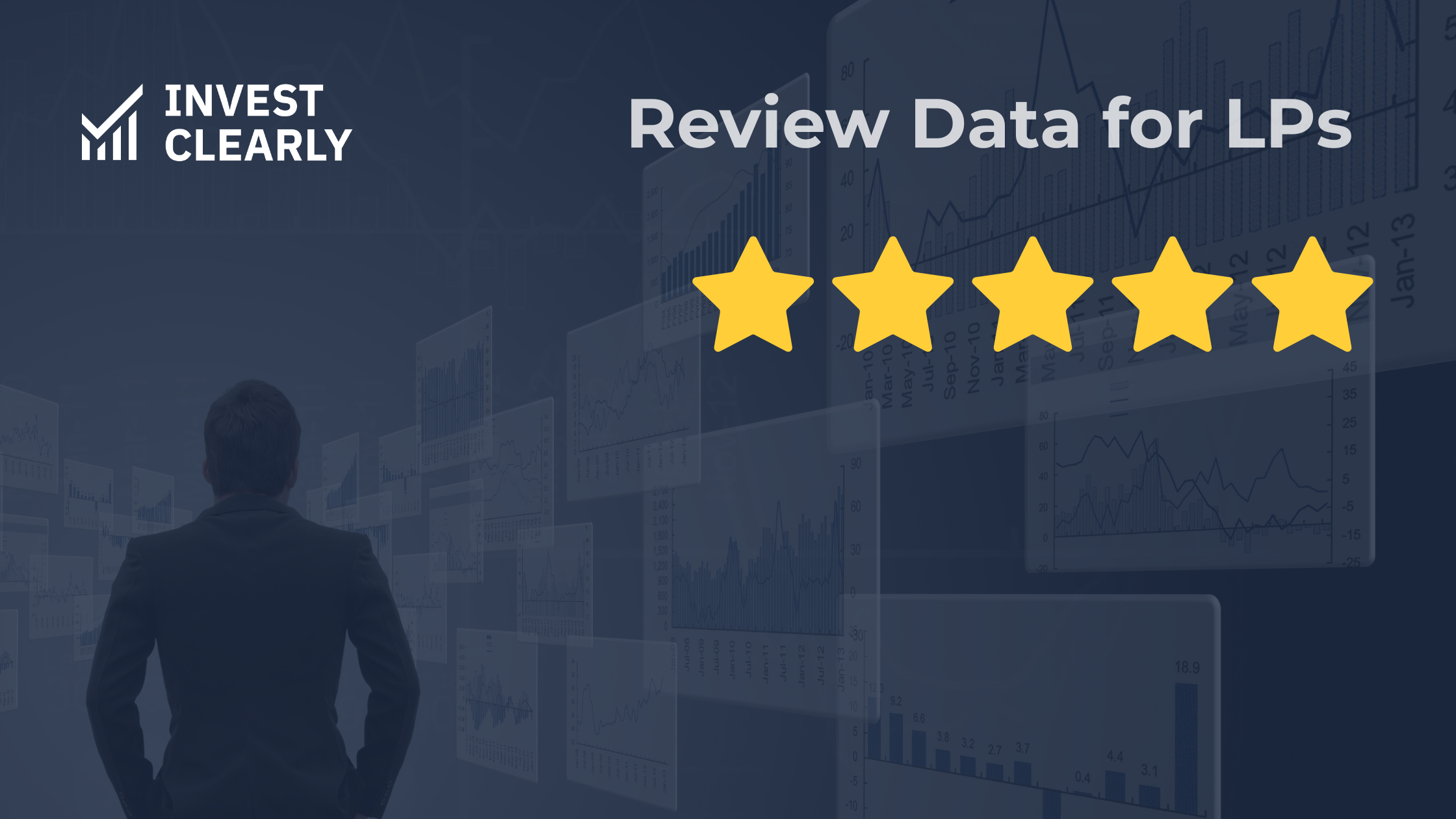
Investor Experience Index Q3, 2025: LP Takeaways
Discover quarterly insights of how LPs rate their experiences with GPs. Get data-driven questions to use when evaluating GPs.
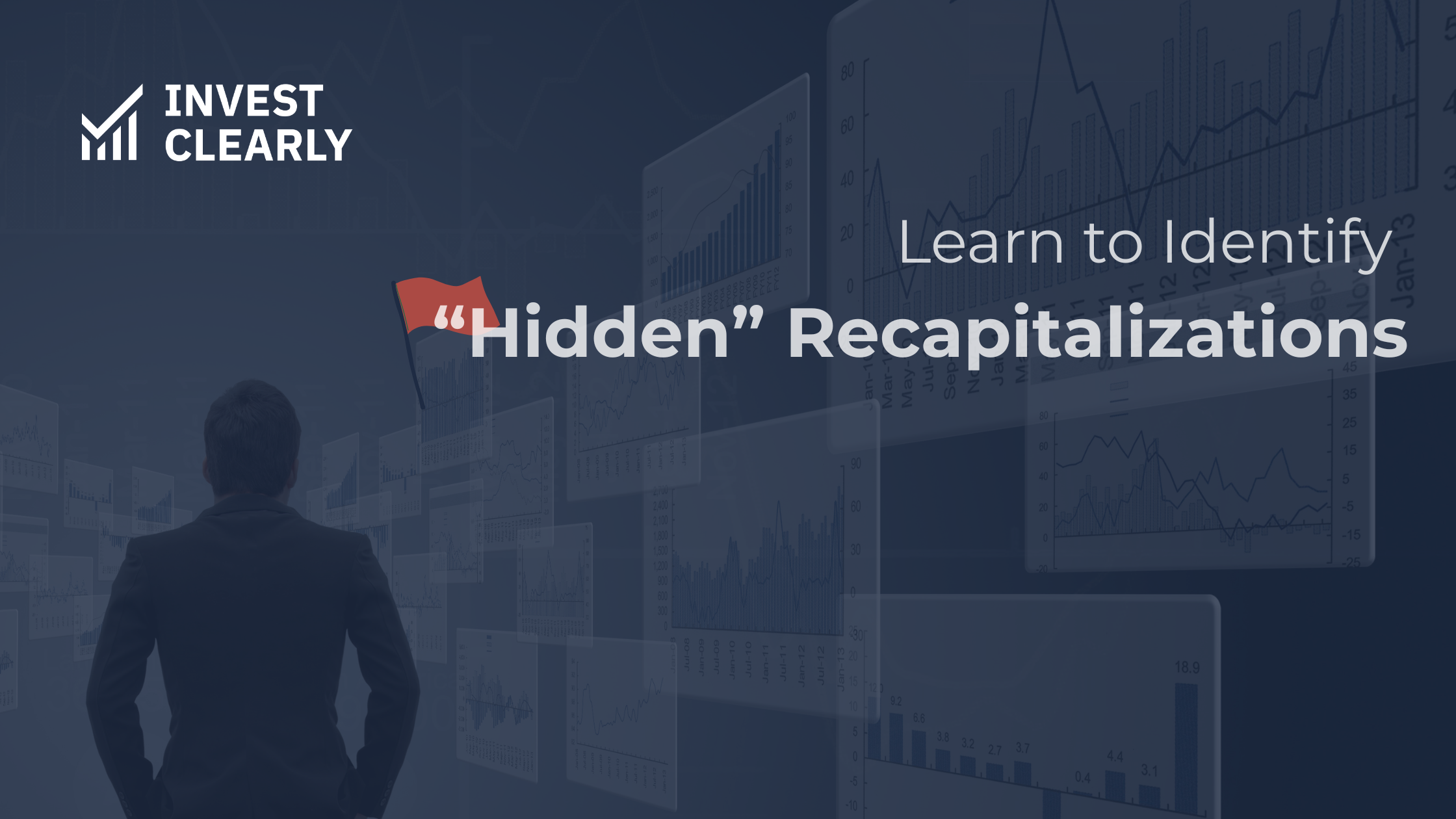
Real Estate Recapitalizations—What Passive Investors Need to Know
A recapitalization is a restructuring of a property's capital stack (the mix of debt and equity that finances an investment). While they can be legitimate business strategies, transparency can be an issue.
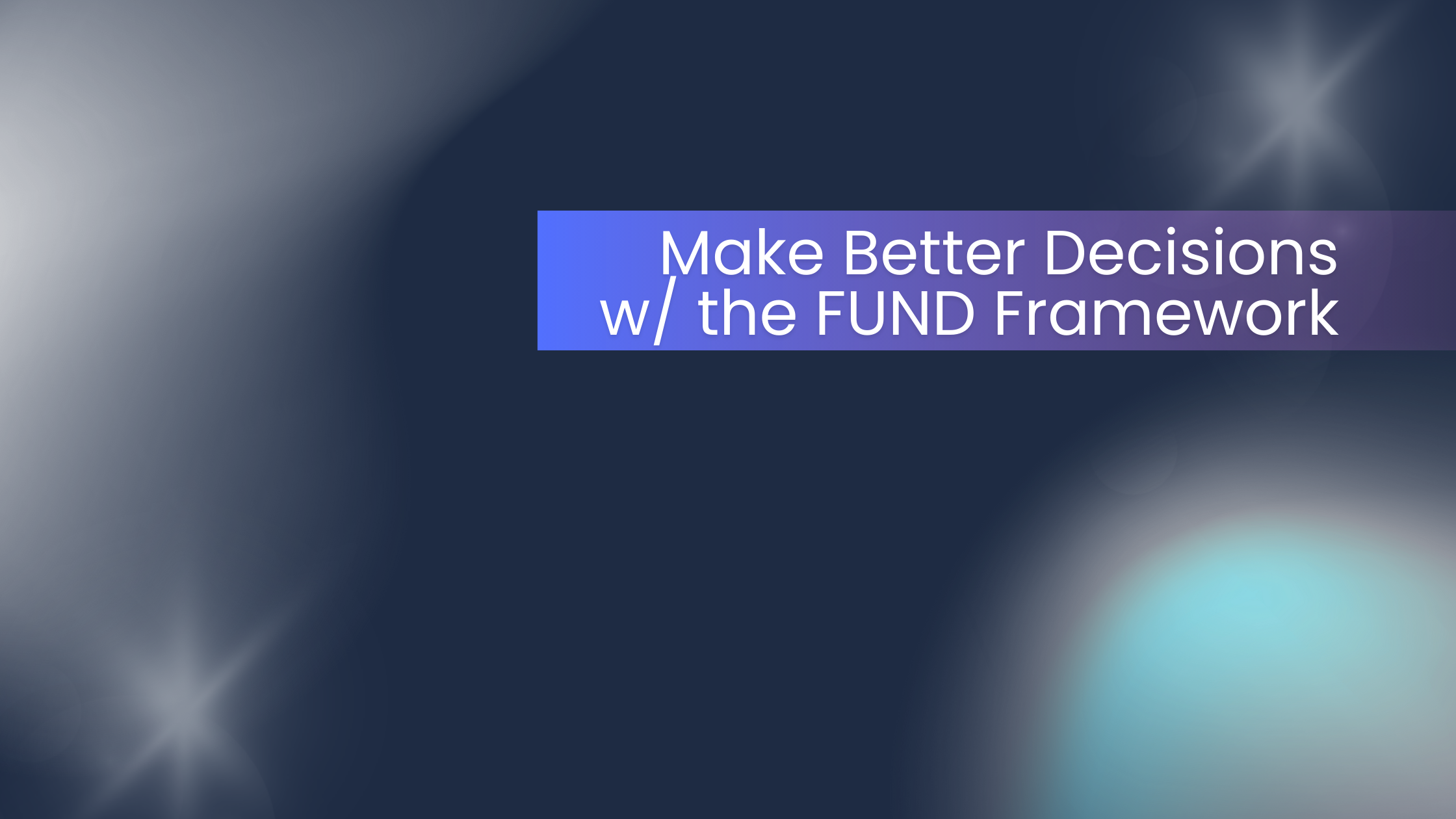
How to Evaluate a Potential Investment Using the FUND Framework
The FUND framework is a simple way to evaluate opportunities by looking at four pillars: Financials, Underlying Assets, Notable Differentiator, and Delegation of Responsibilities.
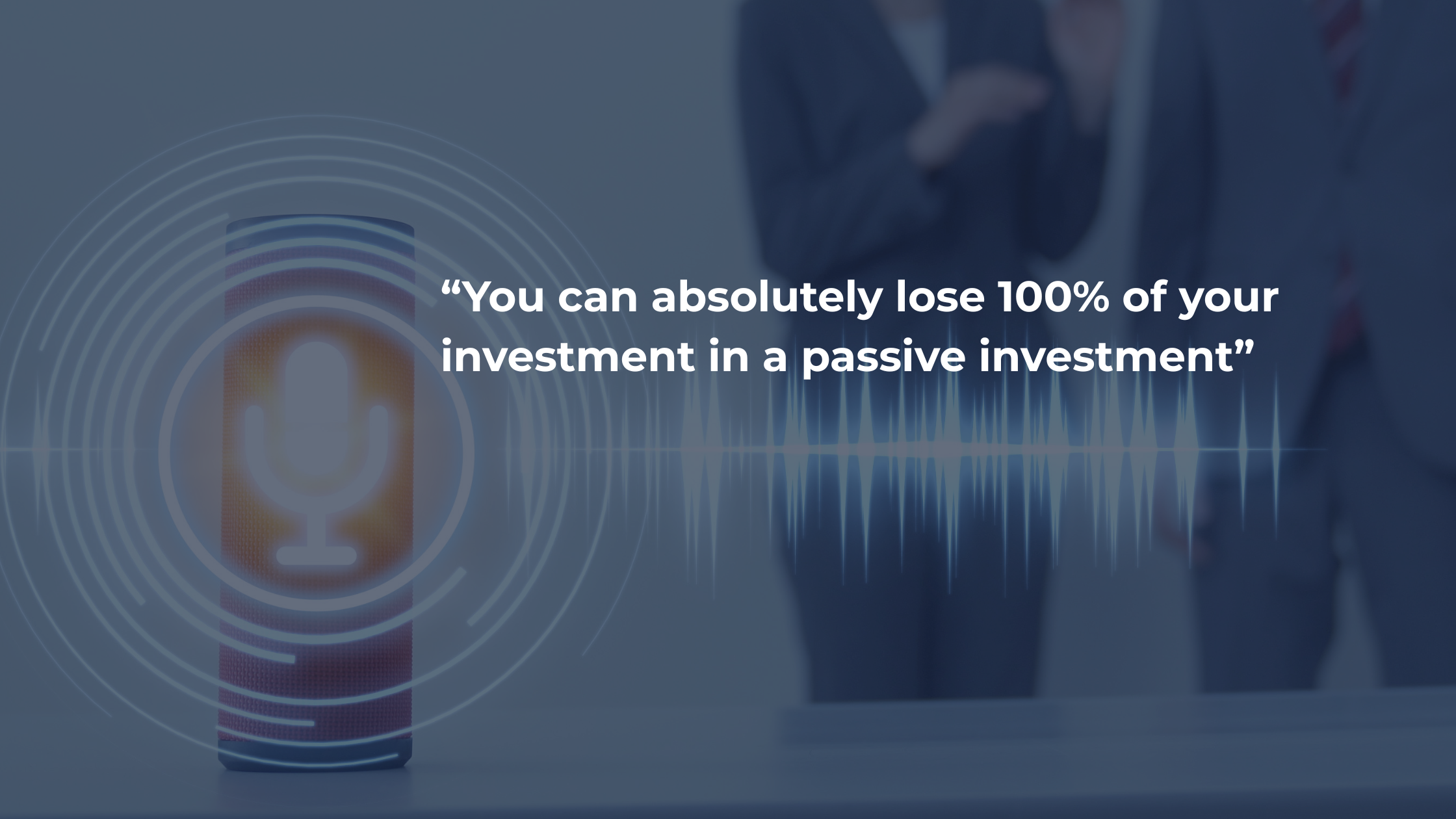
What Needs to “Die” in Passive Investing – According to Guests of The Invest Clearly Podcast
Get the answer to the closeout questions of each podcast episode: “What do you think needs to die in passive investing?” The answers are wide-ranging, from misconceptions about risk, to misleading marketing tactics, to structural issues in how deals are presented.

Passive Real Estate Investing Advice from Experienced LP Investors
Experienced LPs shared their most valuable lessons, drawn from years of investing across various asset classes and sponsor relationships.
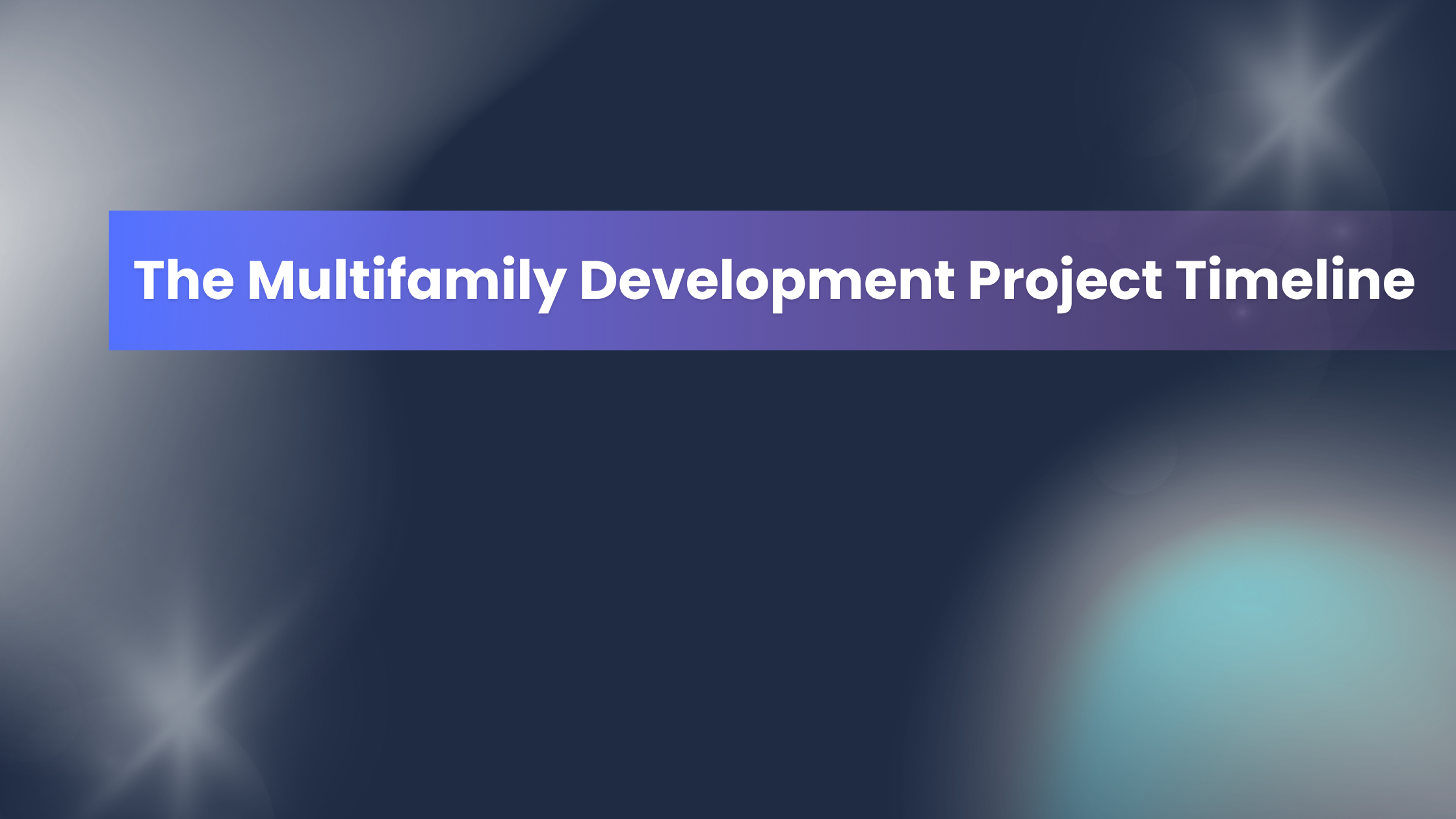
From Land to Lease-Up: The Lifecycle of a Multifamily Development Deal for LPs
This guide walks you through the typical timeline of a multifamily development project from the LP perspective. Learn when investors come on board, what happens during construction and lease-up, and how profits are realized at exit.